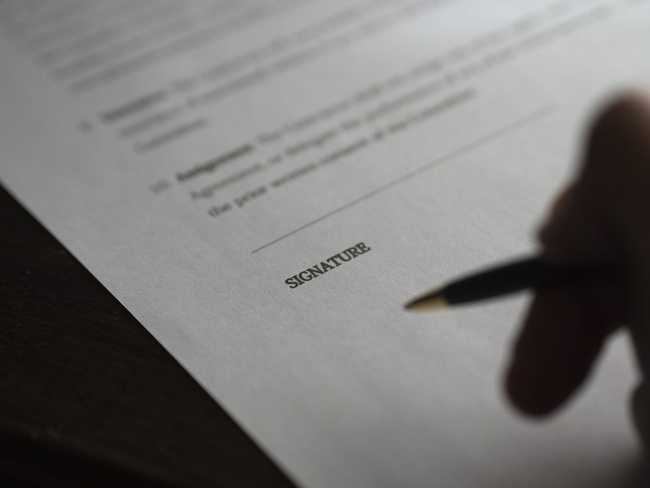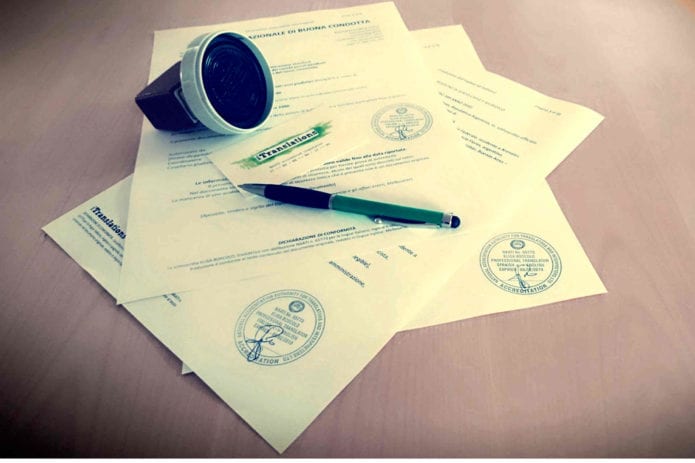
Occasionally, some people feel compelled to change their names. Whether this is due to personal preference or a relationship, it’s not something that you can achieve without going through a specific legal process. If you’re looking to change your name in the state of Arizona, there’s a handful of things you need to keep in mind.
Not sure where to start? Don’t worry, we’ve got you covered.
Let’s take a look at everything you need to know about how to change your name in Arizona.
1. Obtain The Necessary Legal Forms

You can download these off the state government’s website, or you can visit the superior court clerk in your region to acquire them. The two forms you’ll need are the Civil Cover Sheet and the Application for Change of Name for an Adult.
After you’re done, make at least two copies of them. Also, you’ll need to check off box 152 on the second page of the Civil Cover Sheet that reads “Change of Name.”
2. Complete The Application
Filling out these documents will give the court all the information they need about your name change.
You’ll need to provide your current full name, contact info, date of birth, and other similar information. You’ll also be asked the reason behind changing your name. If you’ve previously been convicted of a felony, you’ll need to supply this information, as well.
3. Get Your Documents Stamped By The Clerk of Court

After you’ve fully completed both documents, you’ll need to get them stamped by the superior court’s Clerk of Court. While this process may sound intricate, it’s as simple as taking the documents to this individual.
The Clerk will stamp them and return them to you. Each county in Arizona has a different filing fee, but it will cost approximately $300 to complete this process. If you can’t afford the filing fee at the time, you can request to have the fee deferred so that you can pay it later.
You also have the opportunity to apply for the fee to be waived. But, understand that the deferment and waiving processes are up to the court and may be denied.
4. Schedule a Court Hearing
After you’ve had your documents stamped by the Clerk and handled your filing fee, you’ll need to schedule a court hearing with the court’s administration. This hearing can’t be scheduled sooner than four days after you’ve filed your application, so don’t expect to accomplish everything in one day.
The court will provide you with the date and location of the hearing, as well as the commissioner you’ll be meeting with. Afterward, you’ll use this information to fill out a Notice of Hearing Regarding Application for Change of Name form.
You’ll need to bring the following items when you attend the hearing:
- Your passport
- Driver’s license
- Another form of government-issued ID (if applicable)
Depending on the circumstances around your name change, you may also need to bring these additional documents:
- Proof of residency or naturalization
- Previous name change orders
- A decree of divorce
- An Order of Protection
For those who are seeking to change their birth records as well, you’ll need to bring along your government-issued birth certificate. One that’s been issued by a hospital won’t be sufficient in court.
If your name change is approved, you’ll be given a Court Order Changing Name document that you’ll need later.
5. Change Your Social Security Card
By visiting the US government’s official social security website, and filling out IRS Form S-55 you can start the process of updating your name on your social security card.
All of your information should remain the same other than your name. Afterward, you need to mail your application to their office. Between processing and the time it takes to mail you a new card, you should expect to at approximately 10 business days before you receive it from the Social Security Administration.
6. Visit the DMV

After you receive your new card, you’ll need to take a trip to your local Department of Motor Vehicles in order to continue the process. Bring your old driver’s license, your Order Changing Namedocument, and your new social security card with you in order to avoid any complications.
Then, you’ll be able to request a new driver’s license that has your new name on it.
7. Finishing up
You’ll need to provide the local office of the Bureau of Vital Records with a copy of your official name change order. You can either mail it to them or deliver it in person.
After that, you can start updating your name on your passport, bank accounts, credit cards, and other memberships that still have your old name.
If You’re Changing Your Name After a Marriage…

For a marriage name change, you will need your marriage certificate in order to begin this (nearly identical) process. Be sure that it has your new last name on it.
If you can’t find it, you can request a certified copy from the office that originally filed your certificate. The time it takes to receive a new one is dependent on how busy the office is, but it shouldn’t be more than a few days. You’ll also have to pay a filing fee that depending on your location.
Depending on the office, you may also need to file an affidavit. Then, you can continue on with the name change process listed above.
Once you have your marriage certificate in hand, you can begin the name change process outlined above and simply use your marriage certificate in place of the court order that is provided during the legal name change process.
Changing Your Name in Arizona Can Seem Difficult
But it doesn’t have to be.
Many are turning to name changing services such as UpdateMyName.com that help streamline the process by providing you with an up to date set of pre-filled out forms to simply the name change.
Regardless of which route you choose, you’ll be well on your way to getting through the process of changing your name in Arizona with the above information.











